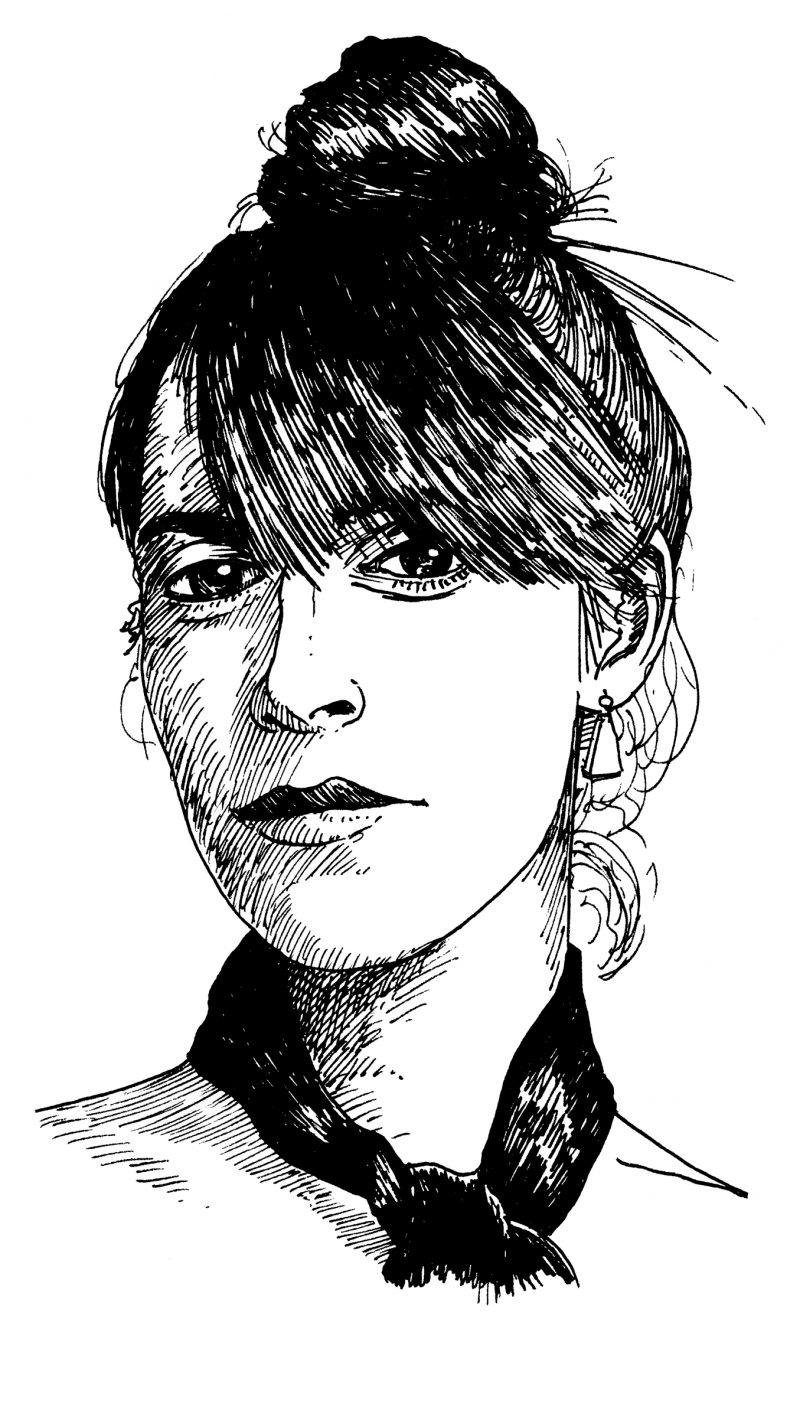I met Leslie Feist in the men’s pants section of Value Village, a huge department thrift store. She was nearing the end of a tour for her latest record, Metals, and was briefly home in Toronto. She bicycled to meet me at the store and smelled like shampoo when she arrived. I handed over one of the two coffees I was carrying, then we relocated to a beige couch that was very 1989 Miami, off in the home furnishings section. Sitting side by side under the industrial lights, our view was of ladies’ blouses, and, to the left, books and records.
Feist was born in Nova Scotia the day before Valentine’s Day, 1976. She moved west to Saskatchewan, then farther west to Calgary, and by fifteen she was singing in the punk band Placebo. It would be nearly ten years before she dropped her first name and became known by the sultry fight of her last name. In the interim, she played bass in Noah’s Arkweld and rhythm guitar in Jose Contreras’s By Divine Right. She performed as Bitch Lap Lap, with a sock puppet, alongside electro-genius Peaches; she toured with Chilly Gonzales; and, in 2001, she joined Broken Social Scene, around which time she made The Red Demos (on which you can hear streetcars going by). It formed the blueprint for the Polydor-released Let It Die, which was followed by The Reminder, then the Grammy Awards, Sesame Street, a duet with David Byrne, an appearance on Saturday Night Live, a stage dive in a blue sequined jumpsuit, an iPod commercial—and ubiquity.
Then, in 2009, she lifted her drawbridge and disappeared from the public eye for two years, reemerging in 2011 with Metals. The title tells you everything; it is of the natural world, and it is incandescent. It is also tempestuous, singular, and elegiac. Part autobiography, part incitement to rebellion, it is sung by a woman who has a ghost in her voice, the same way Nina and Billie did. Accompanied by the heavyweight swagger of her guitar, her songs shake you out of your sleepwalk.
—Claudia Dey
I. A PHANTOM OF THE OPERA NECKLACE
THE BELIEVER: Do you have a certain strategy when you come here, like a certain section you go to first?
LESLIE FEIST: It’s funny, because I was here with my friend yesterday. We’re the same size, and she would get to stuff before me and I’d be like, “How did you find those?” And she said, “You’ve got to go straight to the pants if you want the pants; if you want the shoes, you’ve got to go straight to...
You have reached your article limit
Sign up for a digital subscription and continue reading all new issues, plus our entire archives, for just $1.50/month.
Already a subscriber? Sign in





